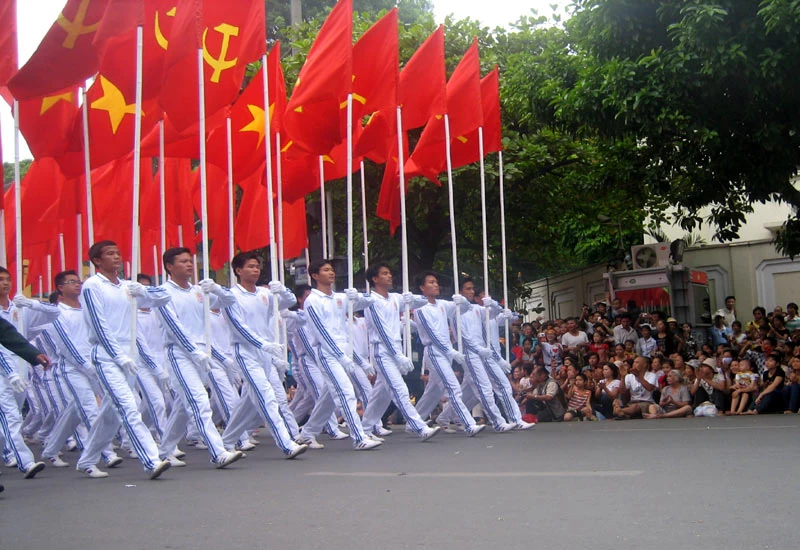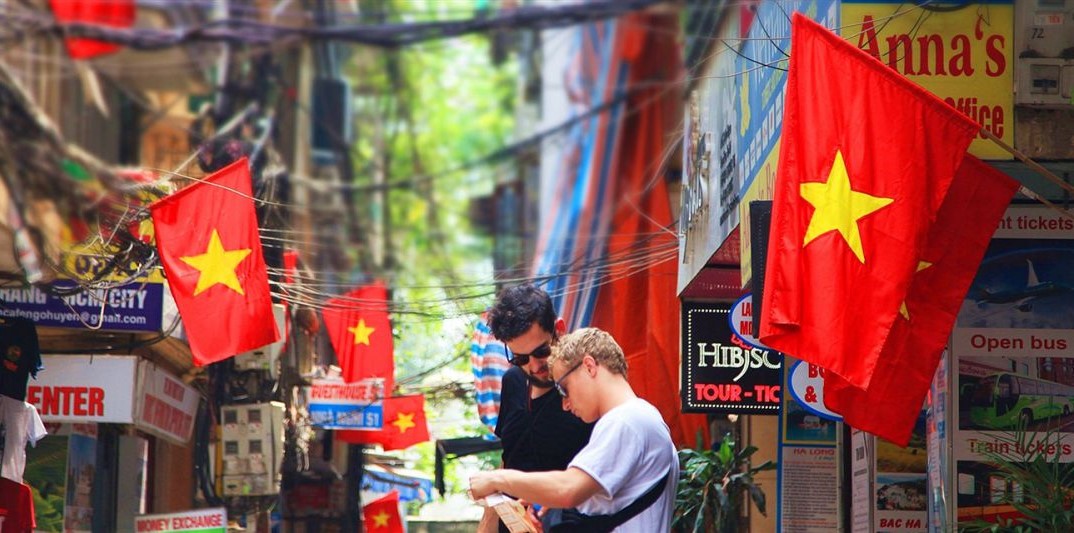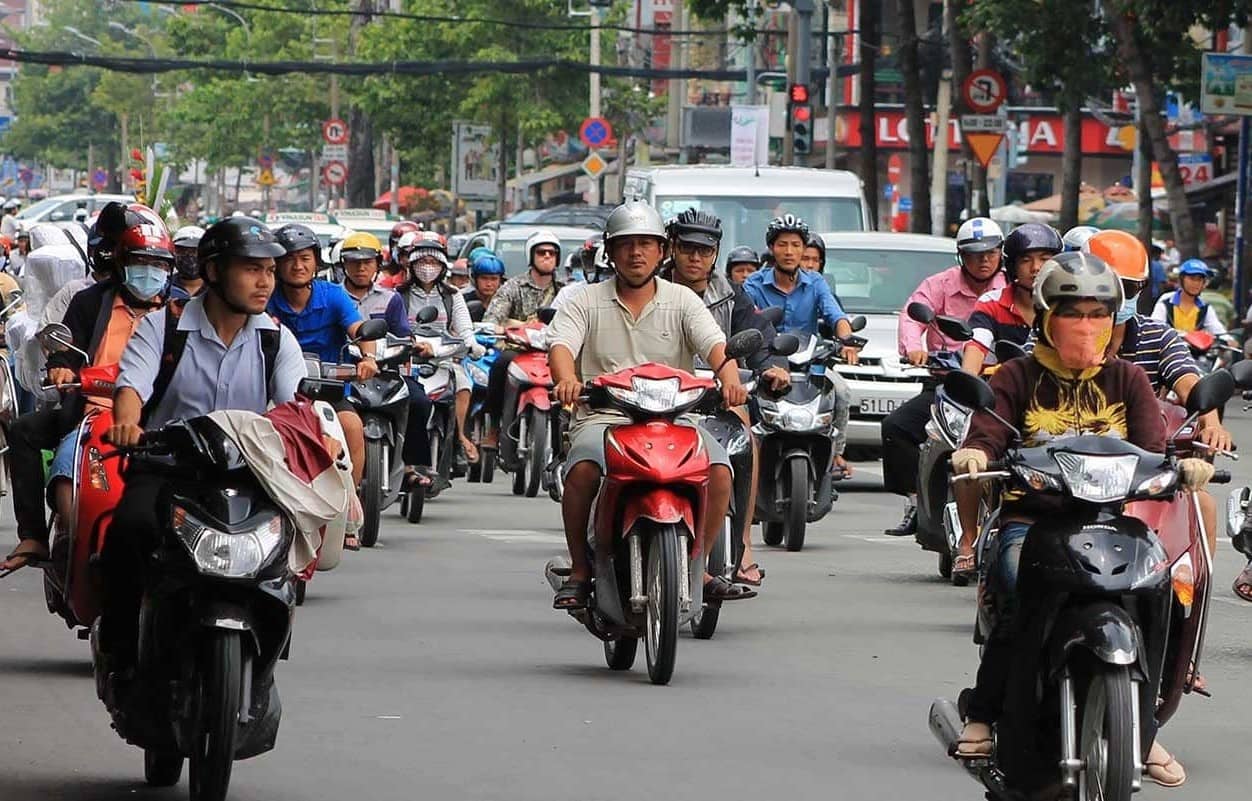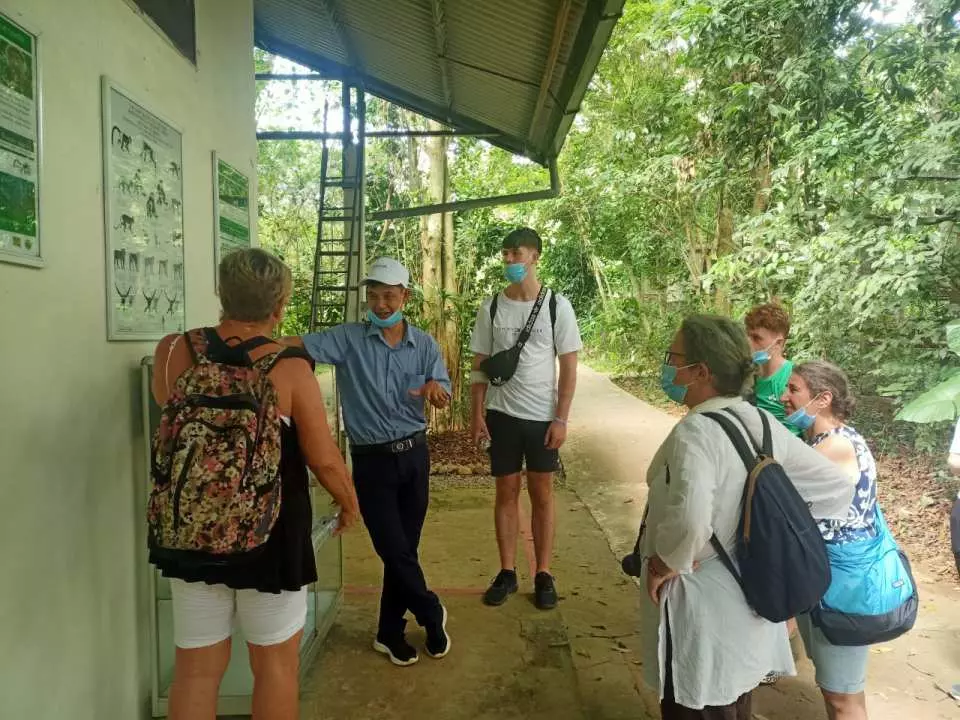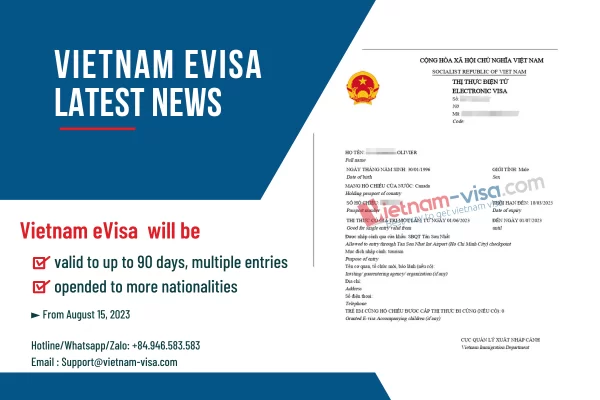
Vietnam E-Visa
Discover Vietnam hassle-free with Vietnam E-Visa. Learn about eligibility, application steps, processing times, and validity periods for travelers. Explore top destinations like Hanoi, Ha Long Bay, and Hoi An with ease using your Vietnam E-Visa. Plan your trip confidently with Ula Travel’s comprehensive guide.
I. Introduction to Vietnam E-Visa
1. What is E-Visa?
The Vietnam E-Visa, or electronic visa, is a type of visa issued by a country that allows travelers to apply for and receive their visa entirely online. This system is becoming increasingly popular worldwide due to its convenience and efficiency. For international travel, E-Visas simplify the visa application process, reducing the need for in-person visits to embassies or consulates and eliminating lengthy paper forms.
2. Importance of International Travel
E-Visas are a game-changer in the realm of international travel. They streamline the entry process, making it easier and faster for travelers to obtain the necessary permissions to visit a foreign country. This is particularly important in an era where global travel is on the rise and travelers seek hassle-free and quick ways to fulfill visa requirements. By adopting the E-Visa system, countries can attract more tourists and business visitors, boosting their tourism and economy.
3. Benefits of the Vietnam E-Visa
The Vietnam E-Visa offers several advantages that make it an attractive option for tourists and business travelers alike:
- Speed: The application process for a Vietnam E-Visa is significantly faster compared to the traditional visa process. Travelers can apply online and typically receive their E-Visa within a few days.
- Convenience: Applicants can complete the entire process from the comfort of their own homes. There is no need to visit an embassy or consulate, and the required documents can be uploaded online.
- Simplicity: The Vietnam E-Visa application process is straightforward. With a user-friendly online platform, applicants are guided through each step, making it easy even for those who may not be tech-savvy.
- Cost-effective: The fees for an e-visa are generally lower than those for a traditional visa, saving travelers money.
- Accessibility: The Vietnam E-Visa can be accessed and stored electronically, reducing the risk of losing physical documents. It also allows travelers to carry a digital copy on their mobile devices.
II. Eligibility for Vietnam E-Visa
1. Who can apply for an electronic visa to Vietnam?
Officially from August 15, 2023, Vietnam will issue electronic visas, or e-visas, to citizens of all countries and territories in the world, regardless of purpose such as tourism, family visits, or work, business or work, commerce, etc., and stay no more than 90 days.
2. Conditions for Applying for a Vietnam E-Visa
To apply for a Vietnam E-Visa, applicants must meet the following conditions:
- Valid Passport: Applicants must have a passport that is valid for at least six months from the date of entry into Vietnam.
- Purpose of Visit: The E-Visa is typically issued for tourism, business, or visiting relatives. It is not suitable for those seeking long-term stays or employment in Vietnam.
- Personal Information: Applicants need to provide accurate personal information, including their full name, date of birth, nationality, and passport details.
- Photograph: A recent passport-sized photograph (in.jpg format) is required.
- Passport Scan: A scanned copy of the passport’s data page (in.jpg format) must be uploaded.
- Email Address: A valid email address is necessary for receiving the E-Visa approval letter.
- Payment: Applicants must pay the non-refundable E-Visa processing fee using a valid international credit or debit card.
III. Applying for a Vietnam E-Visa
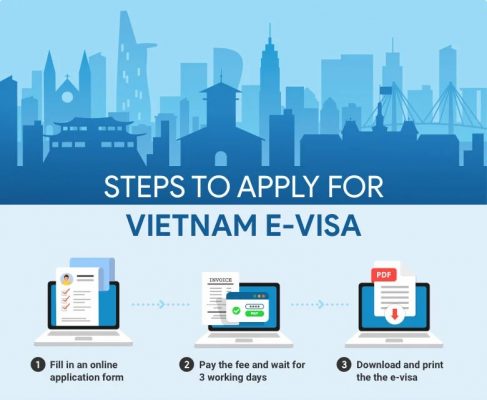
Vietnam e-visa application process
To apply for a Vietnam E-Visa, you need to visit the official Vietnam E-Visa website. Here’s the link to the official portal: Vietnam E-Visa Official Portal. Make sure you are on the correct website to avoid scams and ensure the security of your personal information.
Step 1: Fill in an online application forrm
Once you are on the official Vietnam E-Visa website, follow these steps to fill in your personal information:
- Personal Details: Enter your full name as it appears on your passport, date of birth, nationality, and gender.
- Passport Information: Provide your passport number, date of issue, and expiration date. Ensure that your passport is valid for at least six months from your intended date of entry into Vietnam.
- Travel Details: Select your intended port of entry and exit, and specify your travel dates. Note that the Vietnam E-visa is valid for a maximum of 90 days, single or multiple entries.
- Photograph and Passport Scan: Upload a recent passport-sized photograph (4×6 cm) with a white background and a scanned copy of the personal information page of your passport. Make sure these files meet the size and format requirements specified on the website.
Step 2: Pay the fee and wait for 3 working days
After filling in all the required information,
- Review your application: Double-check all the details to ensure accuracy. Any mistakes can lead to delays or rejection of your visa application.
- Payment: Proceed to the payment section. The Vietnam E-Visa fee is typically around USD 25. Payments can be made using international credit or debit cards. Make sure to use a secure payment method and keep a copy of the transaction receipt.
- Processing Time: The processing time for Vietnam E-Visa is usually about 3 working days. However, it is advisable to apply at least 1-2 weeks before your planned travel date to account for any unforeseen delays.
Step 3: Download and print the e-visa
Once you have submitted your application and made the payment,
- Checking Status: You can check the status of your E-Visa application on the same official portal. Use the application code provided during the submission process, along with your email address, to track the status.
- Download and print: If your E-Visa application is approved, you will receive an approval notification via email. Download and print the E-Visa approval letter. You will need to present this document along with your passport when you arrive in Vietnam.
IV. Duration and Types of Vietnam E-Visa
1. Duration of the Vietnam E-Visa
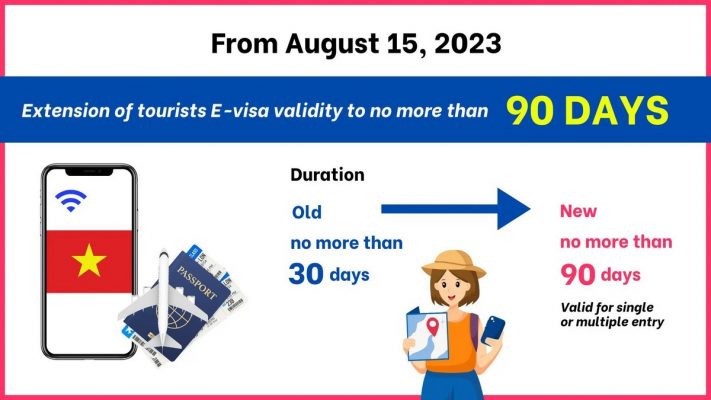
Vietnam E-Visa 90 Days
The Vietnam E-Visa allows for a maximum stay of up to 90 days. This duration is particularly convenient for travelers who wish to explore the rich culture and diverse landscapes of Vietnam without the need for frequent visa renewals. After being issued an electronic visa, foreigners can enter and exit the country an unlimited number of times within 90 days without having to go through new visa procedures.
2. Types of E-Visa
Vietnam offers several types of e-visas to cater to different purposes of travel:
Tourist E-Visa:
- Purpose: Ideal for travelers who plan to explore Vietnam’s beautiful cities, cultural heritage sites, and natural wonders.
Business E-Visa:
- Purpose: Suitable for professionals attending meetings, conferences, or engaging in other business-related activities in Vietnam.
- Requirements: May require additional documentation, such as an invitation letter from a Vietnamese business entity.
Family Visit E-Visa:
- Purpose: Perfect for individuals visiting relatives or friends residing in Vietnam.
- Requirements: This typically requires proof of relationship or an invitation from the host in Vietnam.
Each type of E-Visa provides the same duration of stay but serves different needs, ensuring that travelers can choose the most appropriate visa for their visit to Vietnam. When applying, ensure you select the correct visa type to avoid any issues upon entry.
V. Important Notes When Traveling with a Vietnam E-Visa
1. Laws and Regulations
- Stay Regulations: E-Visas are typically valid for a single or multi-entry and allow a stay of up to 90 days. Ensure you do not overstay your visa, as this can lead to fines, deportation, or future travel restrictions.
- Non-Extendable Visa: Vietnam E-Visas cannot be extended. If you wish to stay in Vietnam longer than the duration allowed by your E-Visa, you must exit the country and apply for a new visa.
2. Safety and health
- Vaccinations: It is recommended to get vaccinated against common diseases such as hepatitis A and B, typhoid, and tetanus before traveling to Vietnam. Check the latest health advisories and consult with your healthcare provider for a comprehensive vaccination plan.
- Travel Insurance: Purchase comprehensive travel insurance that covers health, accidents, and theft. Medical facilities in major cities are generally good, but rural areas might lack adequate healthcare services, making insurance even more crucial.
3. Currency and Payments
- Using Vietnamese Dong (VND): The official currency in Vietnam is the Vietnamese Dong (VND). It is advisable to exchange some money before you arrive or at the official exchange counters at the airport and banks.
- Credit Cards: Credit and debit cards are widely accepted in major cities, hotels, and restaurants. However, in smaller towns and local markets, cash is the preferred mode of payment. Ensure you have enough cash on hand for such instances.
- ATMs and Exchange Rates: ATMs are widely available in cities and tourist areas. Be aware of your bank’s fees for international withdrawals. Keep an eye on exchange rates to get the best value for your money.
VI. Frequently Asked Questions (FAQ) about Vietnam E-Visa
1. Can the E-Visa be extended?
The Vietnam E-visa is valid for a maximum of 90 days, single or multiple entries, and cannot be extended. If you need to stay longer or re-enter Vietnam, you’ll need to apply for a new E-Visa or a different type of visa.
2. What should I do if my E-Visa application is rejected?
If your E-Visa application is rejected, you may consider reapplying with corrected information or applying for a different type of visa suitable for your travel purposes. Ensure all required documents are accurate and meet the visa requirements outlined by the Vietnamese authorities.
3. Is it possible to obtain an E-Visa upon arrival in Vietnam?
No, Vietnam E-Visa program requires travelers to apply online and obtain visa approval before arriving in Vietnam. The E-Visa must be obtained through the official website of the Vietnamese Immigration Department prior to travel.
In summary, Vietnam E-Visa offers a convenient and efficient way for travelers to visit Vietnam. It simplifies the visa application process with online submission and quick processing times. Travelers can apply from the comfort of their homes or offices, avoiding the need to visit embassies or consulates. The E-Visa allows for stays of up to 90 days for tourism purposes, providing ample time to explore Vietnam’s rich cultural heritage, stunning landscapes, and vibrant cities.
Learn more about: Vietnam travel guide for first timers



